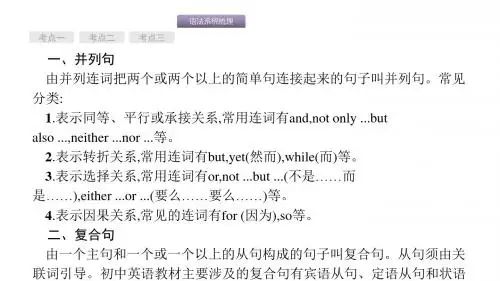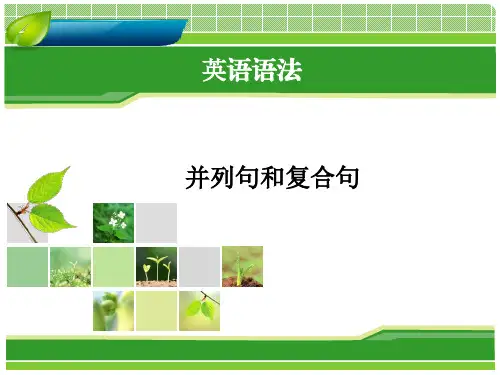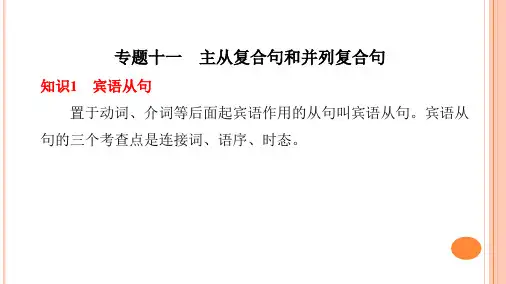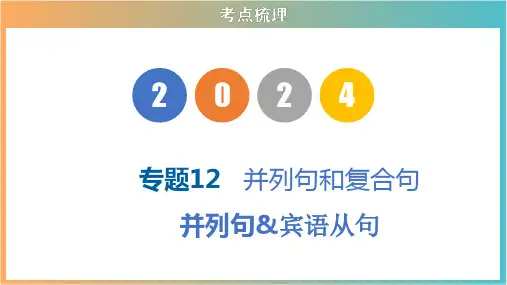并列句
复合句 复合句的某个成分,如主语、宾语、表语、同位语、定语、状语等,由另一个句子承当。
初中英语教材中涉及到的复合句主要有:The Object Clause (宾语从句)、The Adverbial Clause (状语从句) 和 The Attributive Clause (定语从句)。其它诸如主语从句、表语从句、同位语从句等形式的复合句尽管在教材中也有出现,但在中考中没有被列为重点考查范围。
难点链接
简单句 简单句只含有一个主谓结构,而且句子的各个成分都由单词或短语组成。简单句根据结构分为五种: 1)主语+谓语 The disease has spread all over the world. 2)主语+谓语+宾语 I bought a new bike. 3)主语+谓语+间宾+直宾 Tom gave me a birthday present. 常用于这种结构的词有: a)间接宾语后置时,其前用介词to: give,how, send, bring, pass, lend, hand, tell, return, write, pay, throw, teach, promise等 b) 间接宾语后置时,其前用介词for: make, buy, do, get, paint, play, save, order,look, sing, find, serve等
并列句
难点链接
3. 表示选择关系的并列句 这类并列句常用并列连词or(或者,否则)等连接前后简单句。 or有两重含义: (1)译为“或者”,表示选择。例如: Now you can have a rest or you can go to the cinema. (2)译为“否则”、“要不然”,表示条件。例如: You must tell the truth, or you will be punished. 4. 表示因果关系的并列句 这类并列句常用并列连词for,so等连接前后简单句。 (1)for在意义上与从属连词because,since和as相同,但它们引导的是原因状语从句,而for则连接两个简单句,前者表示结果,后者表示原因。其结构为:简单句(结果)+for+简单句(原因)。 例如:He has many good friends, for he is an honest man。 (2)so意为“因此”、“所以”,但不能与because同时出现在同一个句子中。因为because是从属连词,而是并列连词,用来连接并列句。其结构为:简单句(原因) +so牛简单句(结果)。例如: Mr. Li went to his hometown, so Mr. Wang was taking his class instead.








